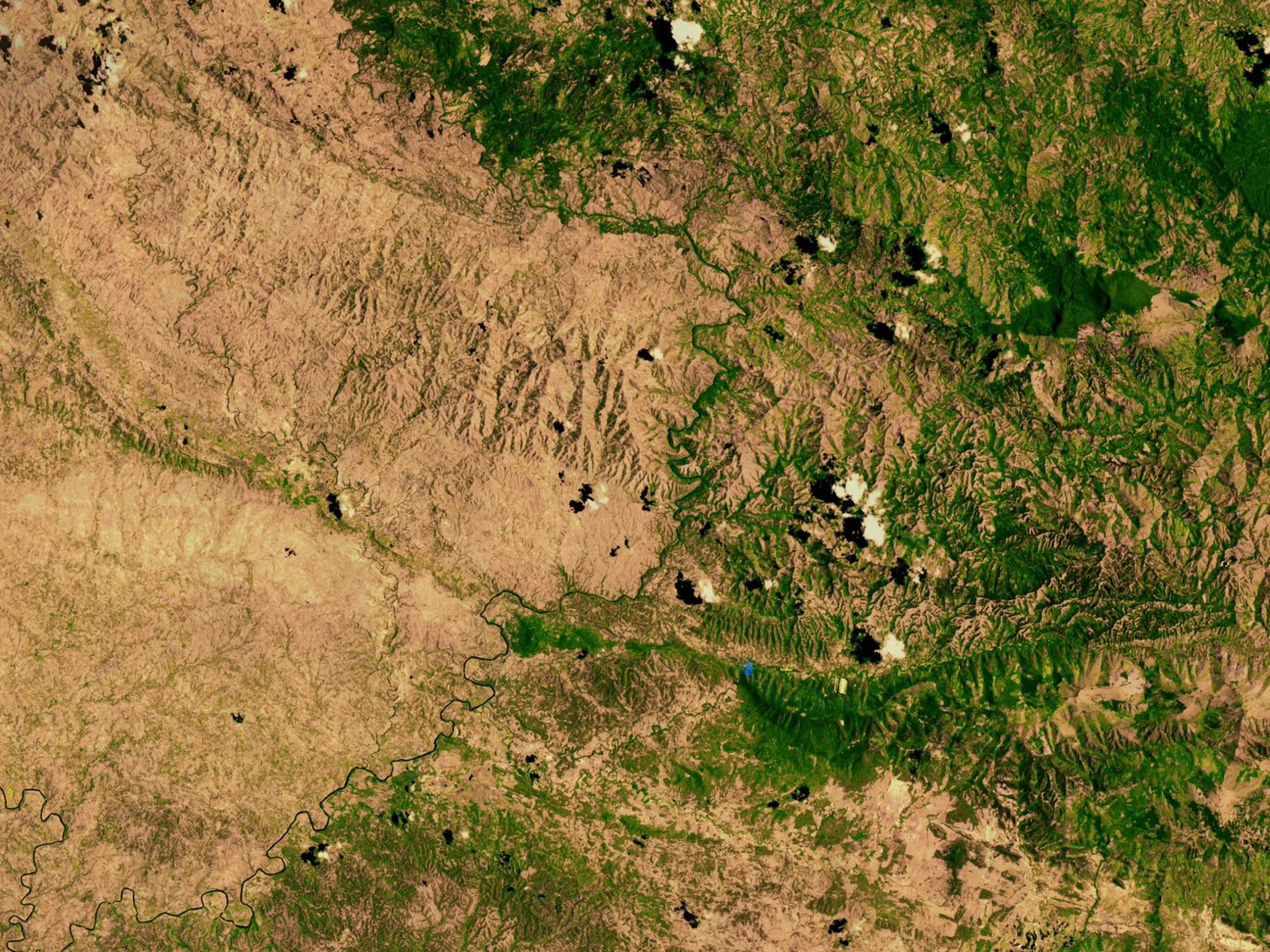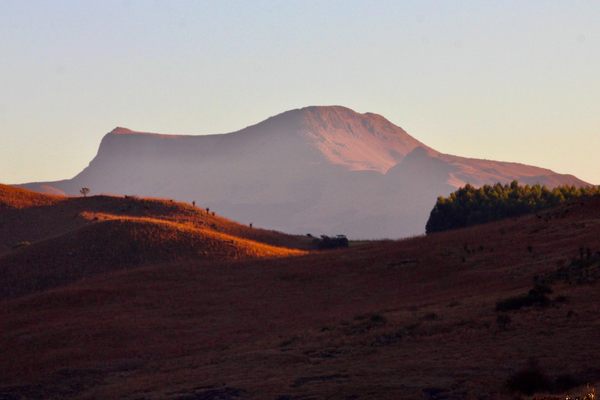The Totally Crazy and Possibly Necessary Hack That Buries Carbon Emissions 7,000 Feet Underground
 Deforestation on Hispaniola (Photo: NASA)
Deforestation on Hispaniola (Photo: NASA)
After years of stops, starts, failed negotiations and raised hopes, the world has a climate change deal, which aims to keep “the increase in global average temperatures well below 2°C,” compared to preindustrial levels. As part of the deal, countries have pledged to start working on their carbon emissions over the next five to 15 years—enough to make a start towards that goal of staying below a 2°C (3.6°F) increase, although not to meet it.
There are dramatic changes associated with climate change: glaciers melting, coastlines and whole islands ceded to the ocean, drought, even death. With this new deal, the worst of that could be avoided.
But still, there will be places on the planet that will be transformed—some of them by strategies and technologies meant to keep global temperatures from rising too fast and too far.
These changes are already happening on large scales: swaths of oceans are being turned into fields of wind turbines, and deserts are being dotted with solar farms. But many experts believe that keeping average temperatures from increasing more than 2°C will also require “negative emissions”—projects that take carbon from the atmosphere and capture it in a “sink” from which it will not escape.

Rapeseed is a biofuel feedstock (Photo: Myrabella / Wikimedia Commons)
Carbon dioxide can be captured directly from ambient air using chemical reaction; some minerals naturally remove carbon dioxide from the atmosphere as they weather. But the most-oft discussed strategies for creating negative emissions involve establishing forests, either where they once grew or in new places altogether, and storing carbon in the ground.
If either of these two strategies were deployed on the scale necessary to create enough “negative emissions” to make a significant dent in the world’s carbon emissions, they could change the face of the planet, in their own way. The plants involved would cover hundreds of millions of acres—the equivalent of 1.5 or 2 Indias for growing additional biomass, in some scenarios. “The immensity of this endeavor would be unlike anything that exists today,” writes Oliver Geden, a research director at the German Institute for International and Security Affairs, who specializes in climate policy.
An increasingly popular idea involves pairing them together, so that a bioenergy project, where plants are grown for fuel, is connected to a carbon capture and storage project, where excess carbon is injected into the earth. To get an idea of what bioenergy and carbon capture might look like, though, there’s basically only one place on earth to look—an ethanol plant in Illinois.

A bit of Illinois geology (Photo: goatling/flickr)
Decatur, Illinois, is near the center of the state. There are about 74,000 people there, as well as the North American headquarters of the agricultural company Archer Daniel Midlands. In 2011, the company partnered with the Midwest Geological Sequestration Consortium to start what the U.S. Department of Energy considered “one of the most promising industrial carbon capture and storage projects” in the country. The idea was to take the carbon dioxide waste from the process of brewing ethanol and to inject it back into the ground.
This is the ideal spot for such an initiative. The project site is on top of a geological formation called the Mount Simon Sandstone, which is a Cambrian layer that dates to one of the earliest geological eras, when multi-cellular organisms first started becoming more prevalent. The sandstone formation is honeycombed with spaces that are filled with briny water, so salty that it’s not much use to us. But those spaces can also hold carbon dioxide, and the Mount Simon Sandstone is sandwiched between a granite layer and an impermeable layer of shale and limestone, the Eau Claire formation, that should keep the gas in place.
On the surface, the project is relatively small, about half a square mile, on a piece of land that had been previously used as farmland or been fallow. “It looks like an open field with a gravel pad,” says Sallie Greenberg, the project’s principal investigator, who works for the Illinois State Geological Survey. This is where the injection well is located, and it’s just a little over a mile from the ethanol plant.

An Archer Daniel Midland corn plant in Nebraska (Photo: Ammodramus/Wikipedia)
The real action is under the ground. The project partners drilled a well 7,236 feet into the ground, and over the course of the project used it to inject almost 1 million metric tons of carbon dioxide, captured from the ethanol process, into the sandstone. Here, the Mount Simon sandstone is 1,500 feet thick, and the Eau Claire formation 450 feet thick. The carbon dioxide is injected into the pores below, where it stays in solution. In theory, it could migrate upwards through the sandstone, until it reached the cap of the Eau Claire formation. But because the sandstone is so thick here, that would take a very, very long time, Greenberg says.
There’s no guarantee that projects like this one will actually work to help keep the world from warming further and faster. They haven’t been proven on commercial scale; the purpose of this project was to prove that it was possible to safely and effectively store carbon dioxide here, and to learn about the process. And there are questions about how much carbon bioenergy and carbon capture projects really could keep from the atmosphere.
But the new climate deal promises “to achieve a balance between anthropogenic emissions by sources and removals by sinks of greenhouse gases in the second half of this century.” It’s one of the more ambiguous parts of the deal. “It’s not entirely clear what exactly it means,” says Geden. This could just mean planting lots and lots of trees. But Geden does think more people will start taking bioenergy and carbon capture projects, as well as other negative emissions strategies, more seriously. In the long run that could mean transforming the surface of the earth, with forests or field, and making use of what’s underneath, by sending carbon dioxide as far down as we can.




















Follow us on Twitter to get the latest on the world's hidden wonders.
Like us on Facebook to get the latest on the world's hidden wonders.
Follow us on Twitter Like us on Facebook